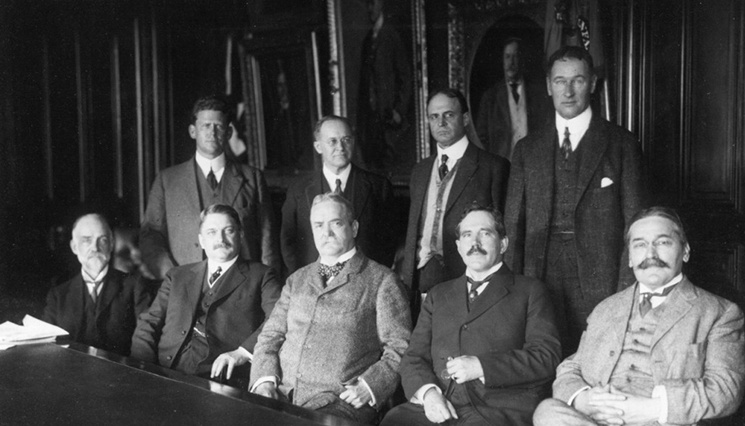
Picture the ideal businessman/woman.
We ALL know what they look like. We’ve been told what a “real” businessperson looks like since we were children. It’s ingrained into our cultural DNA. When it comes to the stereotypical business leader we still envision people like Don Draper from Mad Men, or Pat Bateman from American Psycho. Even How I Met Your Mother parodied the executive look every episode of the show with Barney Stinson’s obsession with suits (who he had made by Tim Gunn from Project Runway).
Perfect tailored suits, soft imported leather shoes, sterling silver cuff links and tie clip to match were for 50 years the armor donned by the business knights of the conference room table. Their sword was the executive fountain pen with cerulean ink; their shield the thick embossed business card inlaid on eggshell colored paper.
It is an enviable style of sophistication.
But, the renaissance of the power suit is coming to an end.
This is in no means an attack on the fine suit. I, myself, am partial to the three-piece suit and my silver tie clip. But, like everything – there is a time and a place. And that time and place is rapidly leaving the workplace … in a hurry.
Yeoman executives like Mark Zuckerberg, and Nicholas Woodman of GoPro are supplanting the old knights of the conference table. They’re men of the people; Robin Hood personified in some ways.
Zuckerberg has become famous for his “lead from the front” style of management. He sits in the general office space among his employees, not tucked away in the corner office. However, he’s probably more famously known for his dress. He’s the definition of casual executive; he comes to work in jeans and a sweatshirt almost every day. And some of the most powerful business leaders are adopting this style; because they’re beginning to recognize the impact it can have on their people.
The suit is dead.
Or at least it will be soon. The suit is still a symbol of power and firm leadership, but it is also cold and uninviting. What the power suit really says is, “Don’t approach me. I’m too busy,” and in our day and age that kills business development.
Think about it, is that the kind of message you want to send to people? I’m guessing not. Zuckerberg and Woodman are successful inventors, but they’re also successful leaders. A large part of their success as leaders comes from their method of management. They toss on a hoodie and t-shirt and work in the trenches with their employees. This makes them approachable and accessible. People are more likely to feel comfortable talking with them and having open conversations. There’s no aspect of fear.
You’re likely familiar with the figure of speech: dress for the job you want.
But I’d have to disagree. I’m not suggesting you show up to work tomorrow in sweatpants and flip-flops (unless you want a lot of attention). I’m suggesting you dress for the relationship you want to have with the people you work around. Make yourself appear available and amicable. Building strong relationships is the most important method for you to actually get the job you want. Your dress has little to do with it.
Okay, what’s the point?
The point is, there is a monumental shift in the nature of business going on, and we all need to be aware of it. Antiquated styles of leadership are being left behind in the twentieth century. They’re not suited (literally) for our organizations anymore.
More importantly, I’m stressing this example to demonstrate the changing landscape of business in the Information Age. If we, as professionals, aren’t aware of some of the superficial and lesser changes occurring in the world, they will begin to add up and take a hefty toll on your organization. With rapid growth and innovation taking place at unprecedented speeds, these transformations, if not accounted for, will leave you lagging behind. It doesn’t take much in 2015 to find your organization left behind – don’t set yourself up for failure.
You need to take a deep look at your organization; what else might you be missing?







